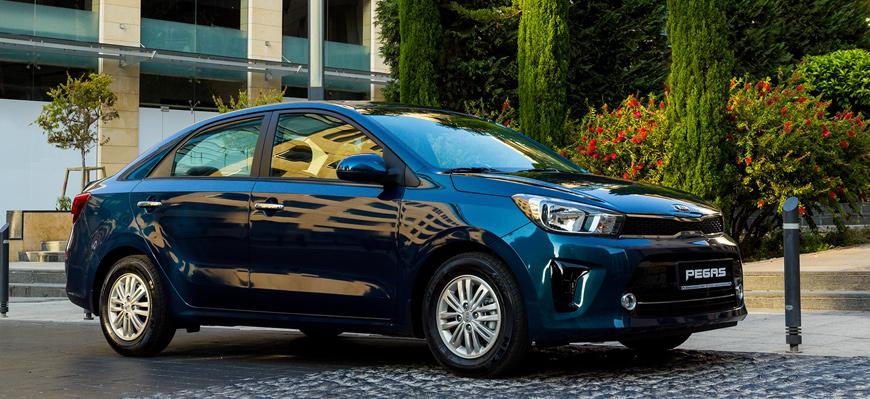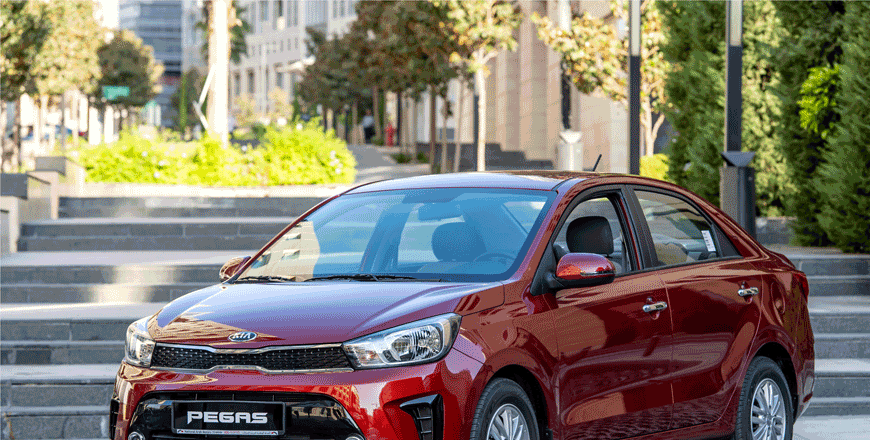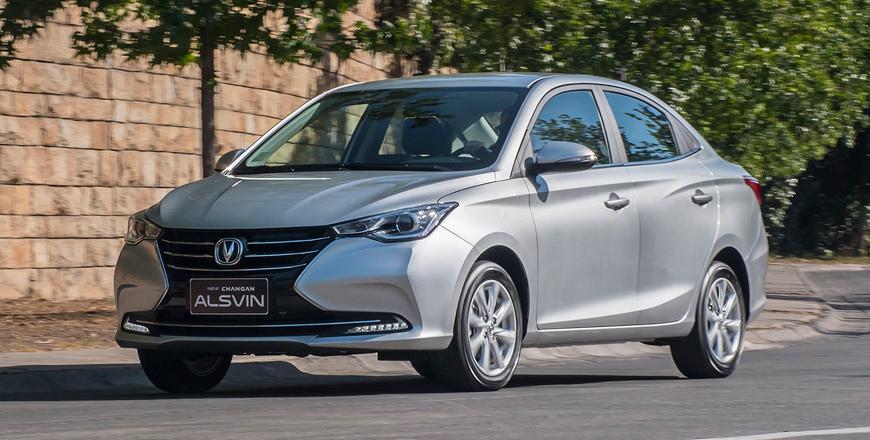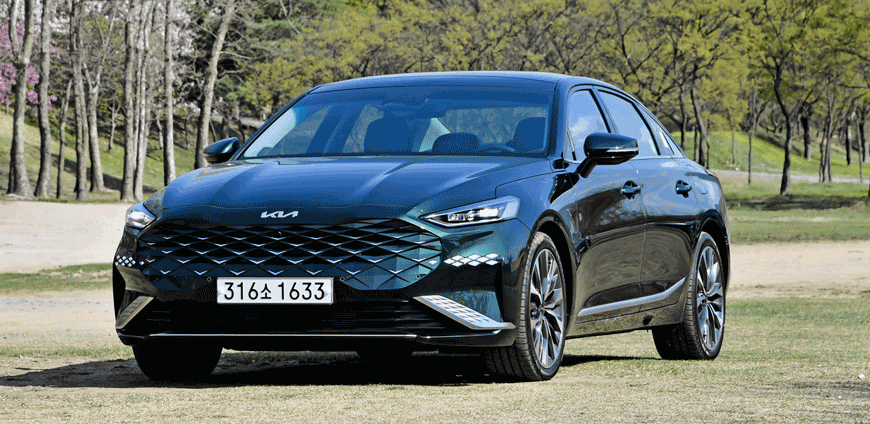You are here
Kia Pegas 1.4 auto: Rearguard response
By Ghaith Madadha - Oct 28,2019 - Last updated at Oct 28,2019

Photos courtesy of Kia
An attainable everyman’s well-equipped and un-pretentious car designed primarily for developing market drivers, the Kia Pegas launch in recent weeks comes at the right time for the prevailing economic climate.
Built in collaboration with the Korean automaker’s Chinese Dongfeng partner, the Pegas is a rearguard response to shore up the brand’s entry-level end of the market as other Kias move ever more upmarket.
Based on, and sitting below the Rio saloon in Kia’s line-up, the Pegas vies with small saloons like the Renault Logan and Nissan Sunny in the highly competitive B-segment.
Engineered as an affordable car for value-oriented customers including families feeling the squeeze, first-time drivers and fleet operators, the Pegas uses proven components, along with more cost-effective Chinese production and a rationalisation of some upmarket features. Well-incorporating equipment, features and design elements for maximum effect and prominence, the Pegas’ design is characterised by its slim contemporary ‘Tiger-nose’ corporate Kia grille, big gaping functional lower intake and faux gill-like side intakes. With chiseled bonnet, high waistline and ridged surfacing, the Pegas fits seamlessly among modern Kias, without looking over-stated or over-ambitious.
Smooth and progressive
Powered by a single engine option driving its front wheels, and choice of 5-speed manual or 4-speed automatic gearboxes, the Pegas’ naturally-aspirated 1.4-litre 4-cylinder engine develops 95bhp at 6,000rpm and with a slightly more torque-biased ‘under-square’ design, produces 97lb/ft torque at 4,000rpm.
Free revving and with a distant and very subdued hint of top-end snarl, the Pegas engine combines with a comparatively lightweight of 1,041-1,062kg to deliver adequately timely 13.1-second 0-100km/h acceleration and a 180km/h top speed. Meanwhile, its frugal fuel consumption is rated at 6.1l/100km on the combined cycle.
Consistently smooth and progressive in delivery, the Pegas is as responsive at low-end as necessary, and is fairly flexible to keep pace on city, highway and country roads, and moderate inclines. Driven between Jerash and Amman at a constant 80-100km/h, the Pegas did feel like it would have been more comfortable with a fifth gear. As driven in 4-speed automatic guise, it is smooth shifting and economical, but often dropped to third to maintain momentum, and to second to more assertively pick up speed on this particular tract of highway.
Comfortable and manoeuvrable
Expected to be better on inclines in 5-speed manual with closer and more aggressive ratios in the mix, and more fun to drive with added driver involvement, the Pegas is, however, smooth riding and reassuringly stable on highway, and manoeuvrable, agile and easy to drive in town, regardless of which gearbox is chosen.
Using a MacPherson strut front and torsion beam rear suspension set-up as expected, the Pegas was a more refined drive than anticipated that comfortably dealt with lumpy, bumpy and imperfect road surfacing without wallow or much bounce.
Fitted with narrow and tall 175/70R14 tyres the Pegas rides over textured roads in a forgivingly comfortable and supple manner, while remaining well settled on rebound after dips and crests.
The Pegas’ tyre choice is durable in absorbing vertical shocks and protects the wheels from tall kerbs and deep sudden ruts. Its tyres also help the narrow and nimble Pegas deliver decent and nuanced steering feel for road textures, car position and grip limits as zips through switchbacks and city streets with agile manoeuvrability. Meanwhile body roll and understeer are comparatively well-controlled.
User-friendly
Initially light and somewhat vague at low speed, the Pegas’ steering, however, weighs up better and with a more communicative level of resistance when hustled quicker through corners. Meanwhile, generous ground clearance makes the Pegas well-suited for well-worn urban streets and rougher rural roads alike.
Inside, the Pegas offers good sightlines, a comfortable driving position with rake-adjustable steering and an easy to reach, user-friendly console and layouts, but slightly lower front seat mounting points would benefit taller drivers, when sunroof-equipped. Meanwhile, its rear seats are adequately spaced, but its boot volume is generous at 475-litres.
Well-equipped among competitors, standard and optional Pegas features include a 7-inch Bluetooth-enabled infotainment screen with Android Auto and Apple Carplay, rear parking sensors, air conditioning, electric windows, remote central locking, ABS brakes, electronic stability control and four airbags.
The Pegas’ cabin combines a stylish, uncluttered unexpectedly classy looking dashboard with more value oriented discrete hard plastic textures and hard-wearing faux leather or shiny fabric upholstery options. Meanwhile, the Pegas’ intuitively stepped auto gear lever and adjustable driver’s seat-integrated armrest is a leaf lifted directly from Mercedes’ and BMW’s 1980s repertoire.
TECHNICAL SPECIFICATIONS
Engine: 1.4-litre, transverse 4-cylinders
Valve-train: 16-valve, DOHC
Gearbox: 4-speed automatic, front-wheel-drive
Power, BHP (PS) [kW]: 94 (95) [70] @6,000rpm
Specific power: 67.3BHP/litre
Power-to-weight: 90.3BHP/tonne
Torque, lb/ft (Nm): 97 (132) @4,000rpm
Specific torque: 94.5Nm/litre
Torque-to-weight: 126Nm/tonne
0-100km/h: 13.1-seconds
Top speed: 180km/h
Fuel consumption, combined: 6.1-litres/100km
Fuel capacity: 43-litres
Length: 4,300mm
Width: 1,700mm
Height: 1,460mm
Wheelbase: 2,570mm
Overhangs, F/R: 785/945mm
Tread, F/R: 1,509/1,515
Ground clearance: 150mm
Aerodynamic drag co-efficient: 0.29
Headroom, F/R: 995/952mm
Legroom, F/R: 1,062/865mm
Shoulder room, F/R: 1,365/1,357mm
Hip room, F/R: 1,352/1,295mm
Luggage volume, min/max: 475-litres
Kerb weight: 1,041-1,062kg
Steering: Electric-assisted power steering
Turning Circle: 10.4-metres
Suspension: MacPherson struts/torsion beam
Brakes, F/R: Ventilated discs/drums
Tyres: 175/70R14
Price, on the road, no insurance: JD13,900 (starting from)
Related Articles
Developed with emerging markets in mind and built in collaboration with Kia’s Chinese Dongfeng partner, the Pegas arrived in the region back
The smallest and most affordable of Chinese manufacturer Changan’s cars and crossovers available in Jordan, the compact Alsvin saloon is als
Making it global debut in 2021 and introduced to regional markets in recent weeks as part of a multimodel hybrid electric vehicle launch, th


















